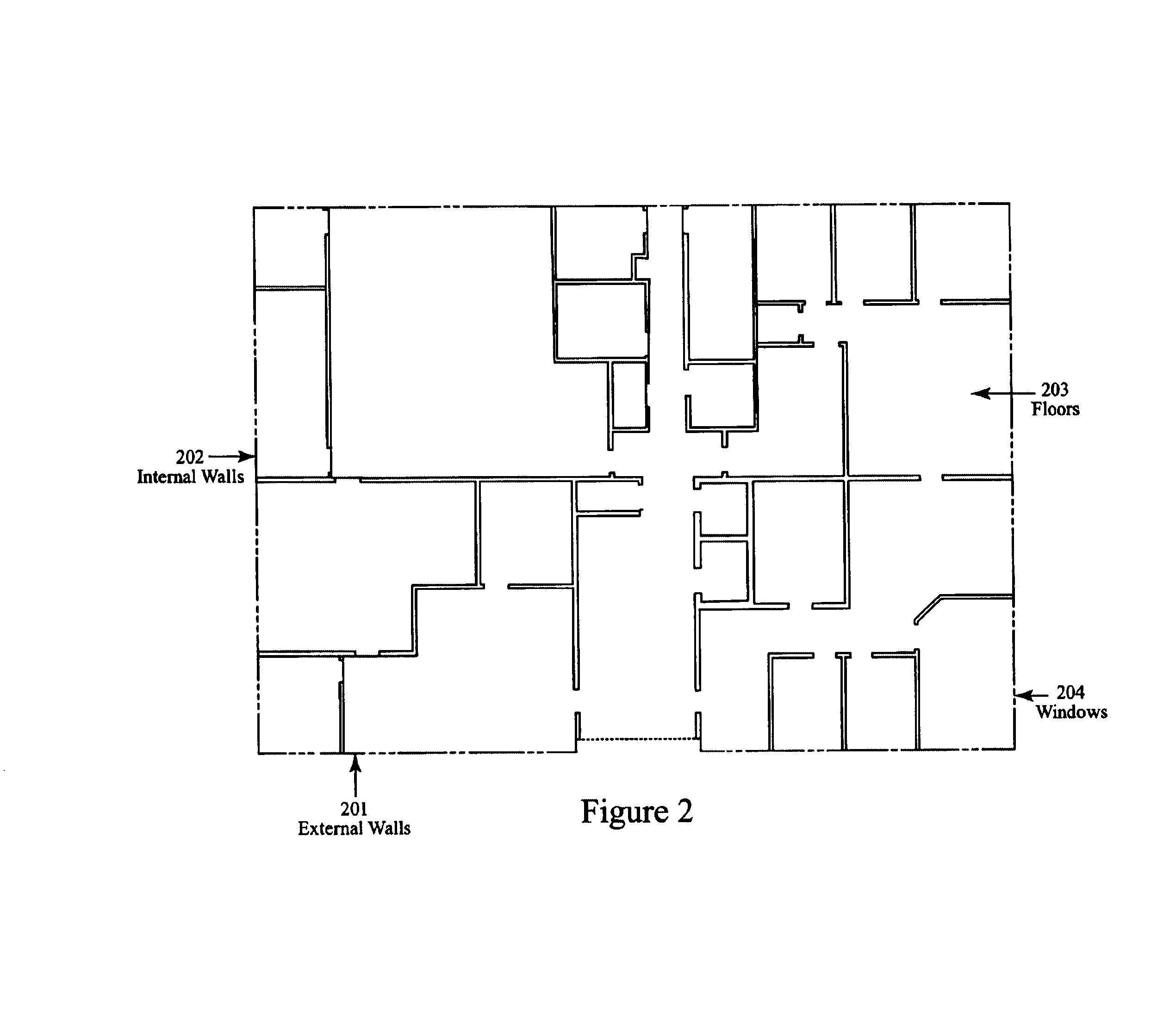Method and system for automated selection of optimal communication network equipment model, position, and configuration
- Summary
- Abstract
- Description
- Claims
- Application Information
AI Technical Summary
Benefits of technology
Problems solved by technology
Method used
Image
Examples
Embodiment Construction
[0080]The present invention represents a dramatic improvement over prior art by providing the design engineer with an automatic method and system for determining optimal communication equipment models, positions, and configurations within a facility. A detailed description of the general method taken by the present invention follows.
[0081]Using the present method, it is now possible to determine the ideal placement and configuration of communication hardware equipment within a facility in an automated fashion. The current embodiment is designed specifically for use with the SitePlanner Im suite of products available from Wireless Valley Communications, Inc. of Blacksburg, Va. However, it will be apparent to one skilled in the art that the method could be practiced with other products either now known or to be invented.
[0082]Referring now to FIG. 1, there is shown a three-dimensional (3-D) simplified example of a layout of a building floor plan. The method uses 3-D computer aided des...
PUM
 Login to View More
Login to View More Abstract
Description
Claims
Application Information
 Login to View More
Login to View More - R&D
- Intellectual Property
- Life Sciences
- Materials
- Tech Scout
- Unparalleled Data Quality
- Higher Quality Content
- 60% Fewer Hallucinations
Browse by: Latest US Patents, China's latest patents, Technical Efficacy Thesaurus, Application Domain, Technology Topic, Popular Technical Reports.
© 2025 PatSnap. All rights reserved.Legal|Privacy policy|Modern Slavery Act Transparency Statement|Sitemap|About US| Contact US: help@patsnap.com



